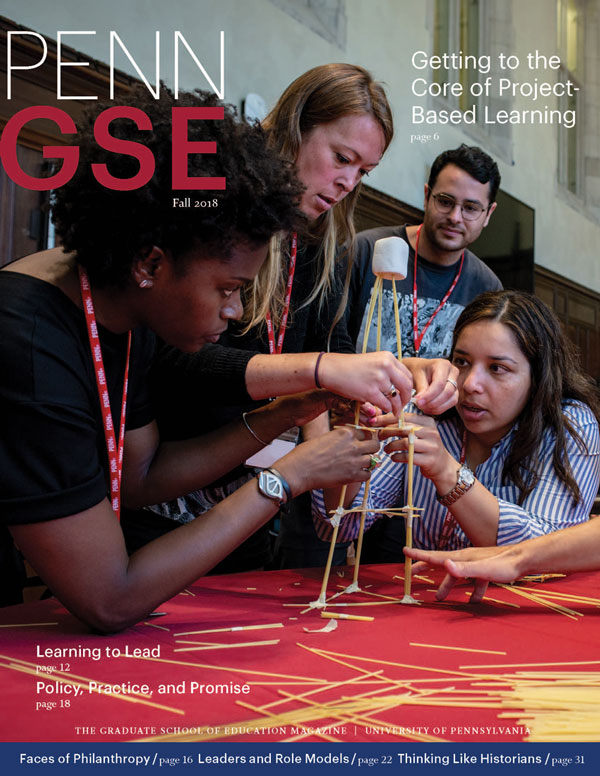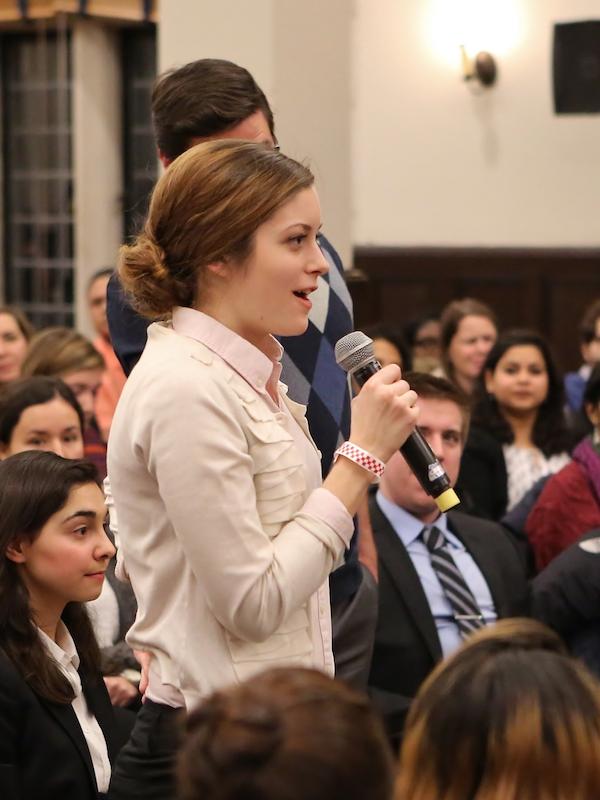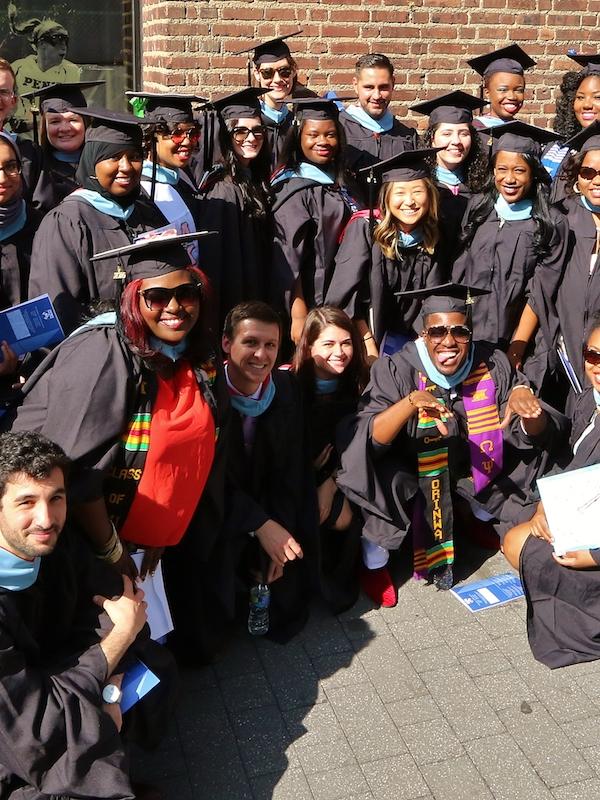Policy, Practice, and Promise: Professor Laura Perna on Opportunity and Higher Education
interview by Juliana Rosati
With college costs and student debt continuing to rise, concerns about higher education affordability and access have never been more urgent. Penn GSE’s Dr. Laura W. Perna, C’88, W’88, James S. Riepe Professor, has dedicated her career to studying how cost and other factors put college within or beyond reach for students, particularly those from underrepresented groups. A national expert, Perna has testified before members of the U.S. Senate and House of Representatives, offering recommendations based on her research. At Penn GSE, she is chair of the Higher Education division and co-founding executive director of Penn AHEAD (Alliance for Higher Education and Democracy). We sat down with Perna to discuss how her latest work is informing the national dialogue on gaps in college access and completion, helping institutions better serve low-income students, and shedding light on the recent rise of community-driven “College Promise” financial aid programs.
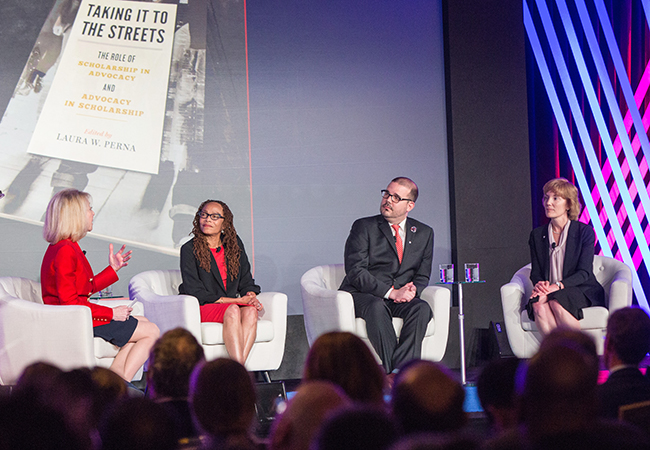
Q: How would you describe the challenges that your research seeks to address?
A: All people should have the opportunity to enroll in and benefit from high-quality higher education. But in the United States—and in many other countries—this is not the case. This inequality has important consequences for individuals and our society. The industries that are growing and the jobs that are in demand require some level of college education. Even in the economic downturn, people who had a college education did better than those who did not. My driving goal is to try to address the large—and by some measures, growing—structural inequality in our educational systems.
Q: What are some of the differences that affect whether students attend and graduate from college?
A: We know that students must be academically prepared for college-level work, they must have the financial resources required to pay college costs, and they must have the knowledge and support required to navigate our nation’s complex educational systems. This means that students from low-income families, students whose parents have not attended college, students from racial and ethnic minoritized groups, and students who attend schools without advanced courses or college counselors are often at a tremendous disadvantage in relation to higher education.
Q: How can these factors be addressed?
A: Addressing these issues requires changes by the federal government, state governments, colleges and universities, and K–12 schools. To improve understanding of one aspect of the federal government’s role, student loans, I held a research conference at Penn in August 2016, with support from the Spencer Foundation and other organizations. We published a collection of papers from the conference, Understanding Student Debt: Who Borrows, the Consequences of Borrowing, and the Implications for Federal Policy (edited with Nicholas Hillman, The ANNALS of the American Academy of Political and Social Science, 2017). The Penn Wharton Public Policy Initiative issued a policy brief summarizing key takeaways, and we shared key findings at a meeting for congressional staff on Capitol Hill. Some of my other projects recognize the central role of state policy in closing college attainment gaps. Advancing knowledge of how states can improve academic readiness, college affordability, and college completion is the focus of a book I co-wrote with my colleague Joni Finney, The Attainment Agenda (Johns Hopkins University Press, 2014).
Q: Several of the current projects you are conducting at Penn AHEAD focus on college affordability. You have been documenting the link between income and college outcomes for four years through your project “Indicators of Higher Education Equity in the United States,” a collaboration with the Pell Institute for the Study of Opportunity in Higher Education, funded by Lumina Foundation. What are some of the most significant findings of your 2018 annual Indicators Report, and what impact can they have?
A: Students from higher-income families are still far likelier to go to college and complete college than those from low-income families. More low-income students are attending college than in years past, but low-income students continue to be concentrated in less selective and for-profit institutions and have lower degree completion rates. Also worrisome is the growth in borrowing, especially among African American students. Recent data show that over 90 percent of graduating black seniors had borrowed, compared with 66 percent of white graduating seniors. We have heard that the data in the annual Indicators reports have been helpful to organizations in making the case for work they do to support underserved students. We also hope the reports will bring attention to the many important issues that need to be addressed, and to the need to study them further.
“College Promise programs are interesting because they are being developed from the ground level—people are coming together and trying to figure out how they can make college affordable for members of their community.”
Q: You are researching how colleges and universities can better serve low-income students through your project “Institutional Practices for Improving Higher Education Equity,” also funded by Lumina Foundation. How would you describe your goals and the work you’ve done so far?
A: Some colleges and universities have been more successful than others at enrolling and graduating low-income students. We want to identify the practices that have made them successful, so that other institutions can learn from these examples. Our preliminary analyses indicate that it is important for institutions to increase the share of educational expenses allocated to instruction and decrease the average net price—the actual cost after aid—for low-income students. Penn GSE doctoral student Jeremy Wright, Penn undergraduate Nathan Jiang, and I are now completing an analysis of how institutions employ the net price calculator, an online tool that most colleges and universities are required to use to communicate information to students and families about college costs and financial aid. The findings that are emerging from this study have important implications for students, counselors, institutions, and policy.
Q: You are also researching the role of local communities in addressing college costs. In recent years, states and communities across the country have been stepping forward to create College Promise programs, which offer funding for students to attend a postsecondary institution, often a community college. What insight are you aiming to provide?
A: College Promise programs are interesting because they are being developed from the ground level—people are coming together and trying to figure out how they can make college affordable for members of their community. For researchers, the programs can be difficult to compare and study, because every community has a particular set of circumstances and the programs take many forms. We want to make it easier for research to be done in this area, so that the programs can benefit from findings about what works.
Q: What have you done so far?
A: With encouragement from the national, nonpartisan College Promise Campaign initiative and seed funding from Civic Nation, we began our work by defining what a College Promise program is, and trying to understand the differences between these programs and longstanding student aid programs. We define a College Promise program as meeting three criteria: a central goal of increasing higher education attainment, a financial award beyond existing federal and state aid to offset the cost of college, and a “place-based” student eligibility requirement, such as living in a designated city or attending a specific school. We developed a comprehensive searchable database of College Promise programs in the United States. In a 2018 paper published in Educational Researcher, Elaine Leigh and I set forth seven categories that we believe provide a useful way of looking at the programs. Now, in partnership with Research for Action and with funding from the Bill & Melinda Gates Foundation, we are taking a deeper look at a small group of state and local programs.
Q: What potential do you see in College Promise programs?
A: College Promise programs could have several benefits. First, many of the programs are looking at how federal, state, and institutional aid come together and how communities can address students’ remaining financial need. By bringing attention to how those different forms of aid align, we might be able to create more affordable options for students. Second, because the programs say that they will cover college tuition and fees for students who meet certain criteria, they potentially provide a transparent message to students. This is important because many students and families have inaccurate understandings of the availability of financial aid due to the complexity of our nation’s financial aid system. Third, the programs may create an opportunity to ensure better transitions when students try to progress from high school to college, and from community college to a four-year institution. These are both points at which students are at risk of discontinuing their education. Since many College Promise programs support students at community colleges, the programs could increase attention to the role of community colleges in helping students to move forward. These are all potential benefits—but we also need to pay attention to potential limitations and unintended consequences. For instance, most programs do not provide any financial aid to students from low-income families beyond what they are already receiving from Federal Pell Grants and state need-based aid programs. We also need to look at the services and supports that colleges are providing to students who enroll because of College Promise programs.
Q: Your new book, Taking it to the Streets: The Role of Scholarship in Advocacy and Advocacy in Scholarship (2018, Johns Hopkins University Press), is a collection of essays you’ve edited about the extent to which researchers view themselves as advocates for equity, inclusiveness, and social change. What drew you to this topic?
A: Faculty and students at Penn GSE study education because we want to improve the lives and experiences of others. Especially in this era of “fake news,” I wanted to reflect with other higher education scholars on how we are ensuring that data and research are being used and applied. The essays in this volume show that there are many ways to connect research and policy to advance equity, inclusiveness, and social change. In another paper just published in the American Educational Research Journal, Kata Orosz, GR’16, Daniel Kent, GED’16, and I explain how academic researchers are contributing to congressional legislative hearings, one aspect of federal policymaking.
Q: Why is a college education important, and what do you see as the way forward?
A: There are so many benefits that come with higher education. Individuals benefit from higher earnings and better working conditions, longer lives, and better health. Society benefits from having more engaged citizens, a higher tax base, lower reliance on social welfare programs, and lower crime. I believe that higher education is essential to the economic and social well-being of individuals, and to our communities, states, and nation. But our system of higher education is complex and difficult to navigate, and it has too many characteristics that limit access and success for people from underserved groups. Whether through state or national policy, institutional practices, local aid programs, or a combination, we need to recognize where students have come from, provide the support they need, and make the systemic and structural changes that allow all students to enroll and succeed in college.
Emerging Researchers
Three Ph.D. students at Penn GSE have participated in Dr. Perna’s current research as they prepare for their own research careers: Elaine Leigh, Jeremy Wright, and Roman Ruiz. All three brought insight from working on the front lines of education as practitioners and express gratitude for the experience of conducting research with Perna.
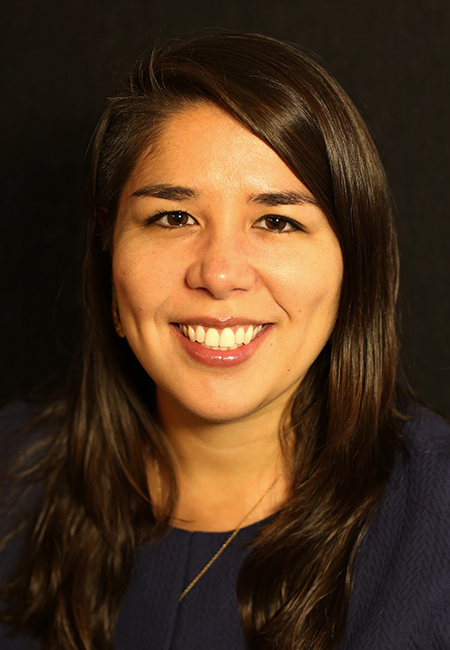
“As a teacher, I saw opportunity gaps among my students, and that’s something that has driven my research interests,” says Leigh, a former teacher and college access program manager, who is contributing to the research on College Promise programs. “I found an alignment of interests with Laura, who is really a leader in this work, and everything you would want in an advisor.”

Wright, previously an advisor to students at the University of Chicago, is taking part in “Institutional Practices for Improving Higher Education Equity” and the College Promise research. “Laura pursues topics that address not only educational policy, but also practical implications for students and institutions. I wanted to learn from her perspective, and she gave me the opportunity for hands-on research experience right from the beginning,” he says.
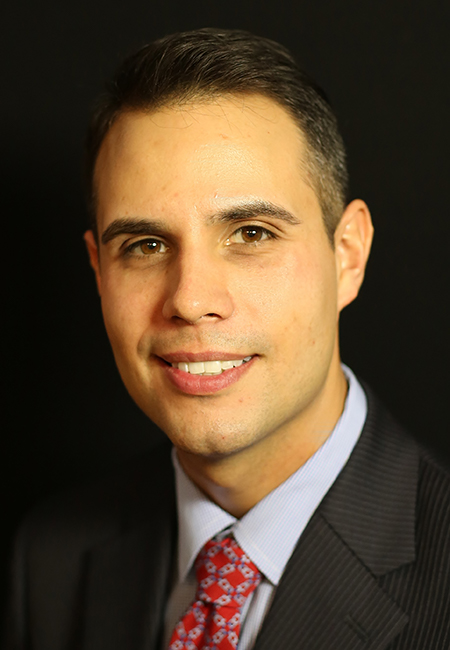
Ruiz, a former college counselor and academic advisor, participated in the “Indicators of Higher Education Equity in the United States” project and is now a researcher at the American Institutes for Research. “Laura is an amazing mentor and teacher,” he says. “She transformed me from a practitioner into a researcher. It’s been a wonderful experience.”
This article originally appeared in the Fall 2018 issue of The Penn GSE Magazine.

